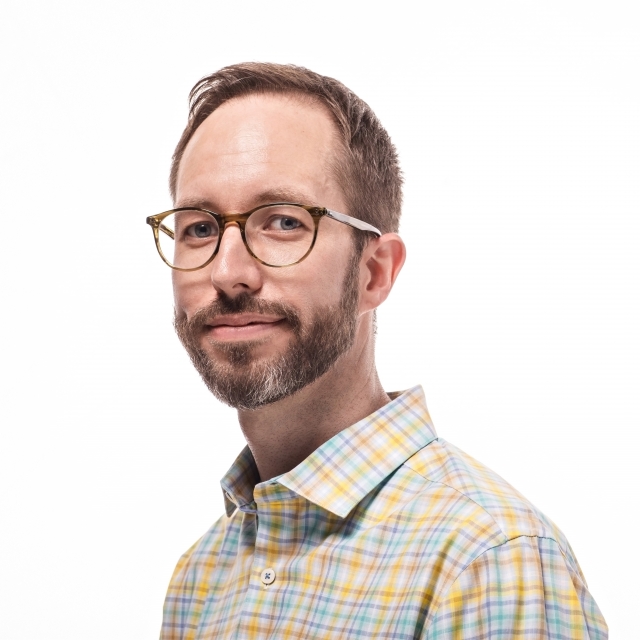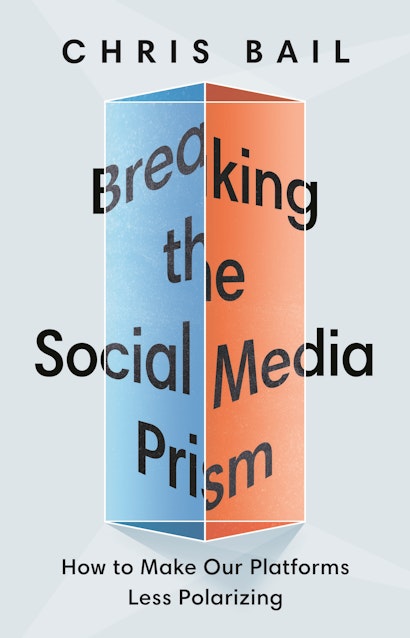In an era of increasing social isolation, platforms like Facebook and Twitter are among the most important tools we have to understand each other. We use social media as a mirror to decipher our place in society but, as Chris Bail explains, it functions more like a prism that distorts our identities, empowers status-seeking extremists, and renders moderates all but invisible. Breaking the Social Media Prism challenges common myths about echo chambers, foreign misinformation campaigns, and radicalizing algorithms, revealing that the solution to political tribalism lies deep inside ourselves.
Chris, your book throws cold water on many of the most popular explanations of how social media shapes political tribalism, why?
CB: Over the past five years, we’ve heard a lot of complaints about how social media platforms are tearing us apart. For example, many people believe social media companies have trapped us inside echo chambers that insulate us from opposing views. Others blame social media companies for failing to counter foreign misinformation campaigns that pitted us against each other, or profiting from algorithms that radicalize us.
What most people don’t realize is that there is surprisingly little evidence to back up each of these claims. For example, the latest research indicates most people aren’t stuck in echo chambers, and that taking people outside their echo chambers might even have the potential to make political polarization worse. Other studies show that most Americans only saw and remembered 1–2 pieces of fake news, and those that engaged with such material did not seem to change their views. Though it is very difficult to study whether algorithms are radicalizing people by exposing them to increasingly extreme content, the best evidence we have indicates this is probably only happening to an extremely small group of people.
The implication of all this research, I think, is that even if social media companies enacted sweeping reforms, they may have relatively little impact.
Interesting. So if the prevailing explanations aren’t correct, what do you think is driving political polarization on our platforms today?
CB: After studying political polarization on social media for more than a decade, I’ve concluded that the most important driver of political polarization on our platforms is us—social media users. Though social media platforms are certainly not blameless, the research my colleagues and I have conducted indicates the answer lies much deeper inside ourselves. For many years, sociologists have argued that one of the key drivers of many different social behaviors is status—one of our most intrinsic human needs is a sense of self worth.
Sociologists, social psychologists, and neuroscientists have amassed substantial evidence that our sense of self worth is deeply linked to the way we construct our identities. Consciously or subconsciously, we are repeatedly presenting different versions of ourselves, observing how other people react, and adapting our self presentations in order to improve our sense of self worth.
The central argument of my book is that social media has profoundly reshaped the way we construct our identities and seek social status. First, social media gives us unprecedented flexibility to present different versions of ourselves. On some platforms, we can be completely anonymous to each other, and on most platforms we can share information about ourselves very selectively. Second, social media gives us powerful new tools to monitor what other people think about us in the form of like buttons, follower counts, and so on.
Ok, so what do these changes in the ways we develop our identities mean for political polarization?
CB: Good question. Even before social media, we social scientists discovered that people are very bad at learning what other people think about them. I invoke the metaphor of the prism to describe how social media has set this process into hyperdrive.
The social media prism fuels social outcasts who seek status by providing them with a sense of belonging. One chapter of my book takes the reader inside the lives of political extremists or “trolls” through a combination of in-depth interviews, survey data, and experiments. Through this research, I concluded that most political extremists are drawn to social media because it provides them with a sense of status—however artificial and meaningless to the rest of us—that they cannot obtain in other social contexts.
Political extremists are some of the most active people on social media. In fact, some research indicates that the majority of posts about politics on Twitter are fueled by a small fraction of users—most of whom have extreme views.
So are you saying that social media is changing everyone into extremists?
CB: Not quite. The most powerful aspect of the social media prism is not simply that it fuels extremism, but also that it mutes moderates. Research indicates that most social media users never post about politics. My research indicates that this is often because posting about politics is risky—it can compromise people’s relationships with their friends, family, and colleagues—or create uncomfortable situations in their workplaces… or at Thanksgiving dinner.
Many moderate people have experienced this offline and online. In fact, a recent study by the Pew Research Center indicates the most common reason people are harassed online is because of their political views. And my research indicates moderates are particularly likely to suffer harassment from the extremists who have an outsized voice on social media.
But when moderates become less vocal on social media, an even bigger problem can emerge: extremists can become misunderstood as moderates. In other words, most people who are exposed to someone from the other side on social media are interacting with someone who has extreme views, but they may *think* this person is in fact a typical member of the other side.
The result is what social scientists call “false polarization”—we all tend to overestimate the ideological extremity of those who don’t share our views, and underestimate the extremity of views on our own side. The result is that we all think there is much more polarization out there than there really is.
So if the root cause of political polarization on social media is deep inside ourselves, what should we do? Should we all just delete our accounts?
CB: I think many people have thought about deleting their accounts, but I don’t think this is the solution for many different reasons. First, social media has become deeply embedded into nearly every corner of our lives—and particularly those of young people. Second, COVID—and a variety of other earlier trends—have created an increase in social isolation. Third, this has created fewer opportunities for Republicans and Democrats to connect with each other. Though I hate to say it, social media may be one of the last spaces where Republicans and Democrats can engage with each other.
But the way we are engaging with each other right now is clearly not working. Therefore, we need to discover new ways to engage in more productive conversations across party lines. Though I think many chasms are too deep to cross on social media right now, it’s also true that a majority of Americans want political compromise. In order to get there on social media, I think we will need both “top down” solutions from social media platforms as well as “bottom up” solutions from social media users themselves.
The final chapters of my book introduce new apps, bots, and other tools, developed within our Polarization Lab, that social media users can use to learn about false polarization, understand how their own behavior might contribute to polarization, and identify more productive conversation partners on the other side of the aisle. I also discuss brand new research we conducted on a new social media platform we created for academic research. We used this tool to try to answer the following question: if we could redesign social media from scratch, where should we begin? How does the design of our platforms determine whether we tear each other apart, or begin to put ourselves back together again?
Chris Bail is professor of sociology and public policy at Duke University, where he directs the Polarization Lab. He is the author of Terrified: How Anti-Muslim Fringe Organizations Became Mainstream (Princeton). Website chrisbail.net Twitter @chris_bail

